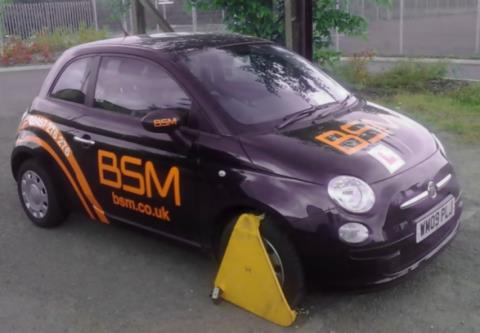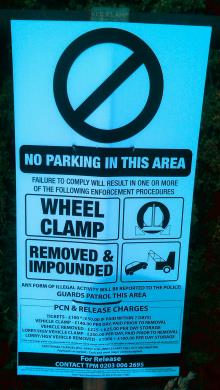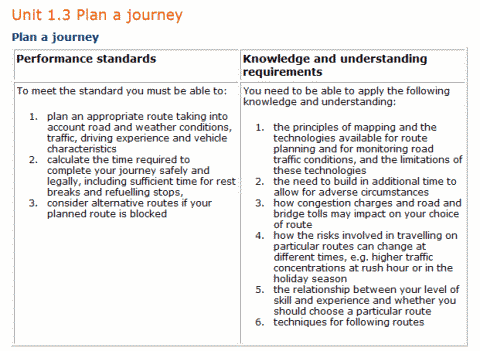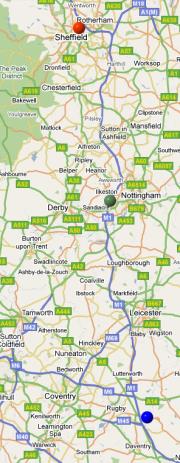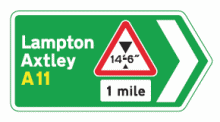The DSA has now started circulating its periodic magazine “Despatch” in a new format. It looks good, and is a decent read if you are an instructor.
Hold on! Let me rephrase that. It is a decent read if you are an instructor who isn’t part of the militant front. It’s easy to forget that nothing the DSA does is good enough for some people, and anything the DSA does do is opposed by these people… even before the DSA thought of it!
The electronic version is also extremely prompt (the March 2010 issue has just gone out). The paper version could be a month late sometimes.
One article which is very interesting is the one about having an observer sitting in on test from April this year. Decent ADIs will have known about this for some time, but the reason I say it is interesting is that the DSA has actually published comments which are not completely in support of what it has decided to do. Here is the article (text only):
[ This is shown on a side panel: Encouraging test candidates to have an observer on test, who would also listen to the feedback at the end, would improve their learning and development]
[ Page 1: OBSERVER ON TEST
2010 will see the introduction. of new and exciting changes for learner drivers, instructors and examiners.
The results of the Learning to Drive consultation identified ways we could improve driver training and testing. It emerged that encouraging test candidates to have an observer on test, who would also listen to the feedback at the end, would improve their learning and development.
Examiners and instructors are already aware of this practice. In 2008/9 18,000 instructors accompanied pupils on 81,000 tests – at the request of the candidate.
From 6 April these figures will rise, because examiners will always ask candidates if they would like their instructor (or another observer – preferably the person who has taught them) to sit in on their test and listen to the feedback. However, it is purely the candidate’s choice. We’ll update you on the level of take-up in future issues.]
[ Page 2: OBSERVER MEANS OPPORTUNITIES
I visited Chalfont Drive driving test centre (DTC) in Nottingham – where I passed my test ten years ago – and Ashfield DTC to hear the views of some of those who will be affected.
Chalfont Drive manager Ivan Bilyk said: “This could be a good way to improve the skill level of test candidates as well as that of instructors.”
The benefit to the candidate is that it gives instructors the opportunity to better support candidates’ ongoing learning and development. For example, if the candidate fails the test, the instructor will have witnessed the drive first-hand, listened to the examiner’s feedback, and can better discuss it with the candidate afterwards.
They can then develop the candidate’s areas of weakness during lessons. If the candidate passes, the observer can give feedback about what they can do to further improve their driving, for example Pass Plus, or agreeing to an individually tailored post-test driver development plan.
Driving examiner Paul Selby is happy with this proactive approach. He said: “Candidates who are upset at failing their test – or even excited at passing – often hear very little of the feedback, so it is important that their instructor or another observer also hears the feedback. In my view, this is the most important aspect of this process.”
He added: “I also find it helpful because, if the candidate is unclear exactly what the fault entailed and where it occurred, the instructor can give further explanation.”
Candidates who decide not to take an observer on test are potentially missing out on maximising their instructor’s expertise. It is also a missed opportunity for instructors to monitor their candidates’ performance.
[ This is shown on a side panel: “Candidates who are upset at failing their test – or even excited at passing – often hear very little of the feedback, so it is important that their instructor or another observer also hears the feedback. In my view, this is the most important aspect of this new process.”]
[ Page 3: FEEDBACK IS KEY
The opportunity to go along on test as an observer gives instructors, particularly new ones, a clear idea of what is expected on test. This may help their own development, as well as that of their students.
Instructors and examiners found that there were benefits for them, but they agreed that the pupil has most to gain.
Olivia Rust has been taking lessons since her 17th birthday last September. She wants her instructor’s support on test.
“He will be a friendly face. I learnt to drive with him and it only seems natural that I take my test with him,” she said.
Another learner driver, Andrea Fothergill, said that she would be asking her instructor to accompany her. Despite the mainly positive responses, the Agency is well aware of the concerns being expressed.
Examiner Julie Rust isn’t opposed to the idea, but wouldn’t want to have an observer on seven tests a day, every day. “It would be additional pressure,” she said.
Some examiners and instructors questioned whether pupils might find it distracting to have others watching their test drive, and some raised the point that carrying the additional weight of two passengers for the very first time might alter performance.]
[ This is shown on a side panel: “Seeing the test first hand and being privy to the feedback is key to a pupil’s development. It also means that if a test is terminated, I can drive the car back with the pupil rather than them being abandoned.” ADI Lorraine Fells, Bill Plant Driving School]
[ This is shown on a side panel: “He needs to be able to see how I perform so he can give me advice on how to improve my driving, whether I pass or fail.” Andrea Fothergill, learner driver]
[ This is shown on a side panel: “I like to see how the examiners work. It is as much a learning experience for me as it is for my pupil.” Nicki Hallam, Sherwood School of Motoring]
[ Page 4: CANDIDATE IS AT HEART OF DECISION
Candidates who want an interpreter could, in theory, carry up to three passengers; but from 6 April, instructors will be able to double up as interpreters for their pupils.
Overall, DSA has taken people’s views on board and, as a result, agreed that this move should not be mandatory. However, the overwhelming benefit to the candidate is at the heart of our decision to promote the candidate’s right to take an observer on test.
Morris Smith, an examiner of ten years, strongly advocates this.
This year, alongside the driving test’s 75th anniversary celebrations, expect to see workshops for instructors to explain the changes in more depth.
Also look out for awareness-raising articles in trade magazines, leaflets and posters at test centres, YouTube films, and Facebook and Twitter adverts.]
[ This is shown on a side panel: “Being present on test will help the working relationship between the examiner and instructor, as sometimes it can feel like ‘us and them’. I’m looking forward to it and I will certainly encourage all my instructors to support the initiative.” ADI Peter Mawer, Partner, Accelerate Driver Training]
[ This is shown on a side panel: Driving instructor Tim Elmer said: “I always give my pupils the choice, but I do prefer to stay at the test centre. I explain that if I go on test and they don’t agree with the examiner’s results, then I can explain them – but equally, that having to deal with an extra passenger could be off-putting.”]
[ This is shown on a side panel: “At BSM we understand the value of having an observer. We offer our customers mock driving tests where an instructor unknown to them conducts the test and their usual instructor acts as an observer. This helps prepare candidates for real test conditions.” BSM senior instructor Trevor Lidbury]
[ This is shown on a side panel: “I’m not bothered by having an observer on test as I believe it will be a benefit to test candidates and instructors.”]
There are as many opinions as there are instructors (and examiners). Test Centre Managers are unlikely to go into print opposing their bosses, so you need to take some comments with pinches of salt – except inasmuch as they are just one opinion out of many others. The same applies to large national driving schools – “senior instructors” are not going to risk their titles by opposing an idea that their organisation is in full support of. And so on.
But what is interesting is that examiners were never prevented from encouraging ADIs to sit in on tests in the past – but they never did (or if they did they didn’t around here). So one must conclude that – at least in the past – they didn’t want ADIs sitting in on tests. It is hard to imagine such a dramatic change now, therefore.
I have absolutely no issue with any of the examiners I deal with (which must total around 20 or more), and I speak casually with all of them (except those who themselves are aloof). If one of my pupils fails, it will be for a sound reason which I cannot alter. I have a good pass rate (not counting the horrible period between last October and January this year!), and no common errors which keep cropping up in my pupils. There is absolutely no reason for me to sit in.
I will carry on as I am – if a pupils wants me, I’m there. But I will make sure they don’t feel bullied to have me there against their initial will.
Incidentally, “feedback” is NOT the key.
“Feedback” is wishy-washy nonsense that appeals to wishy-washy people who are not very good at what they do.
